How Ladakh’s locals are actively boosting the region’s fashion, culinary heritage
When Rigzin Wangmo Lachic returned to her hometown Leh in 2017 — after corporate stints in Japan and New Delhi — she spent the first year trekking across the region. This experience, says Rigzin, was instrumental in understanding Leh’s many communities. Learnings that she put into practice when she founded plant-based restaurant Tsas, and boutique resort, Dolkhar, in June 2022, which is now on Time magazine’s recently-released World’s Greatest Places Of 2023 list.
My grandmother’s biggest fear was that her children/grandchildren would never settle here. It was her sudden passing that triggered me to return,” says Rigzig, 31, adding that since Ladakh’s economy is driven by tourism, it was an obvious choice to explore a venture in the field. “More than hospitality, it was about learning about Ladakh. I spent a lot of time on foot exploring villages across Sham Valley, Stok Kangri, Nubra Valley, Turtuk, etc and it taught me a lot about how every region had its own craft, culture, and food habits.” More so, it gave her much-needed inspirationwhile constructing Dolkhar.
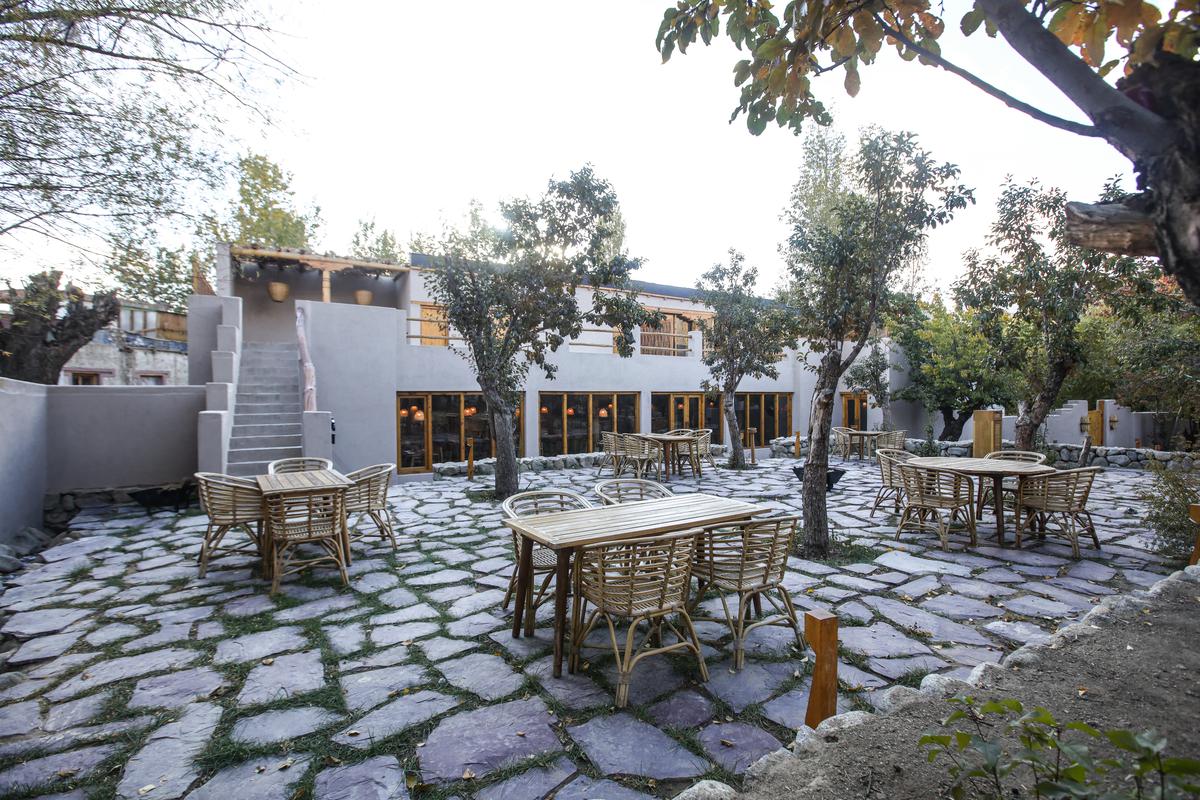
A snapshot of Dolkhar
| Photo Credit:
Special Arrangement
While the Union Territory (UT) and Leh have long been associated as a buzzing tourist hub, courtesy the Khardung La (one of the highest motorable passes in the world), Pangong Tso, Nubra Valley, and the recently-proposed Dark Sky Reserve, the last few years have seen a noticeable change in the region. Think artist residencies, museums, culinary archiving, couture houses, and travel start-ups — all spearheaded by locals.
The authentic Ladakhi experience
Dolkhar, the seven-villa property named after Rigzin’s grandmother Dolkar (khar means palace in Ladakhi), stands where her grandmother’s orchard and small house once were. “It was not structurally possible to restore the house so we rebuilt it using traditional architectural practices and principles of adaptive reuse,” says the entrepreneur who tied up with 40 local artisans for the project that took four-and-a-half years to complete. Later, Rigzig went on to set up Hatti, a crafts co-operative. “The villas are semi-passive solar buildings made using mud, wood, and stone, and remain warm in winter and cool in the summer, just like our traditional Ladakhi buildings. If Dolkhar had to be dismantled, there would be no waste and everything can be reused or will go back to the earth,” says Rigzig, aiming to change the mindset of the “fast traveller”. “We hope to host people who are visiting Ladakh to appreciate it for what it truly is and not expect the experience of a modern world here.”
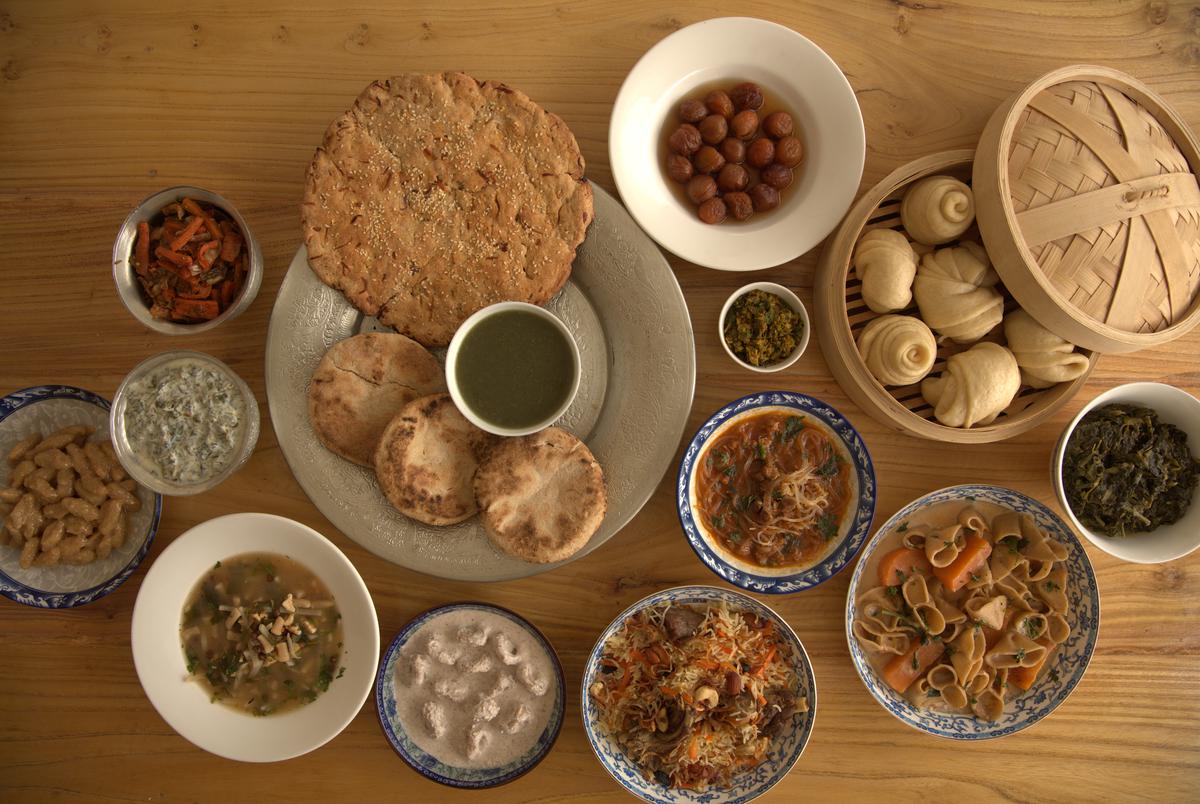
A meal by Artisanal Alchemy
| Photo Credit:
Special Arrangement
Kunzes Angmo moved back to Leh in 2019 from Nubra and started curating the Artisanal Alchemy lunch experiences at the Jade House, Ladakh, and Stok Palace, Stok. “I take my guests on a gastronomic journey specially curated in accordance with their food/diet preferences that is a microcosm of the food of our fathers, and reflects our resilient and sustainable food traditions,” says Kunzes, who has also been retailing handmade apricot conserves since 2021. “I host the lunches for about 10 days a month, five-six months a year in Leh. It’s a highly filtered guest list, and we usually recommend other places to people who seem interested in just an Instagram-worthy picture. The idea behind the interactive experiences (no two lunches are the same) is to start conversations,” says Kunzes, who will host the lunches this year between mid-April and October.
At Jade House, the theme of their lunch is Culture and Commensality wherein a mixed group of eight-12 diners shares a table over a five-course interactive Ladakhi meal, and at Stok Palace, the experience is available for private dining wherein the diners enjoy the same experience within the premises of the 200-year-old-heritage property’s private dining area Zabskhang (for a smaller group upto 12 diners) or Chulli Bagh, the Palace’s apricot orchard (for a larger group of up to 35 diners).
Known for its seven-course chef’s tasting experience, Rigzig is currently working on a “climate awareness food and bar experience” at Tsas by Dolkhar. “We have also developed a bunch of new recipes around more local ingredients that we didn’t showcase earlier — like the wild stinging nettle, and the wild rhubarb, among others. Alcoholic beverages were recently launched too, and we’ve developed a variety of craft cocktails created with local ingredients from the various regions of Ladakh.
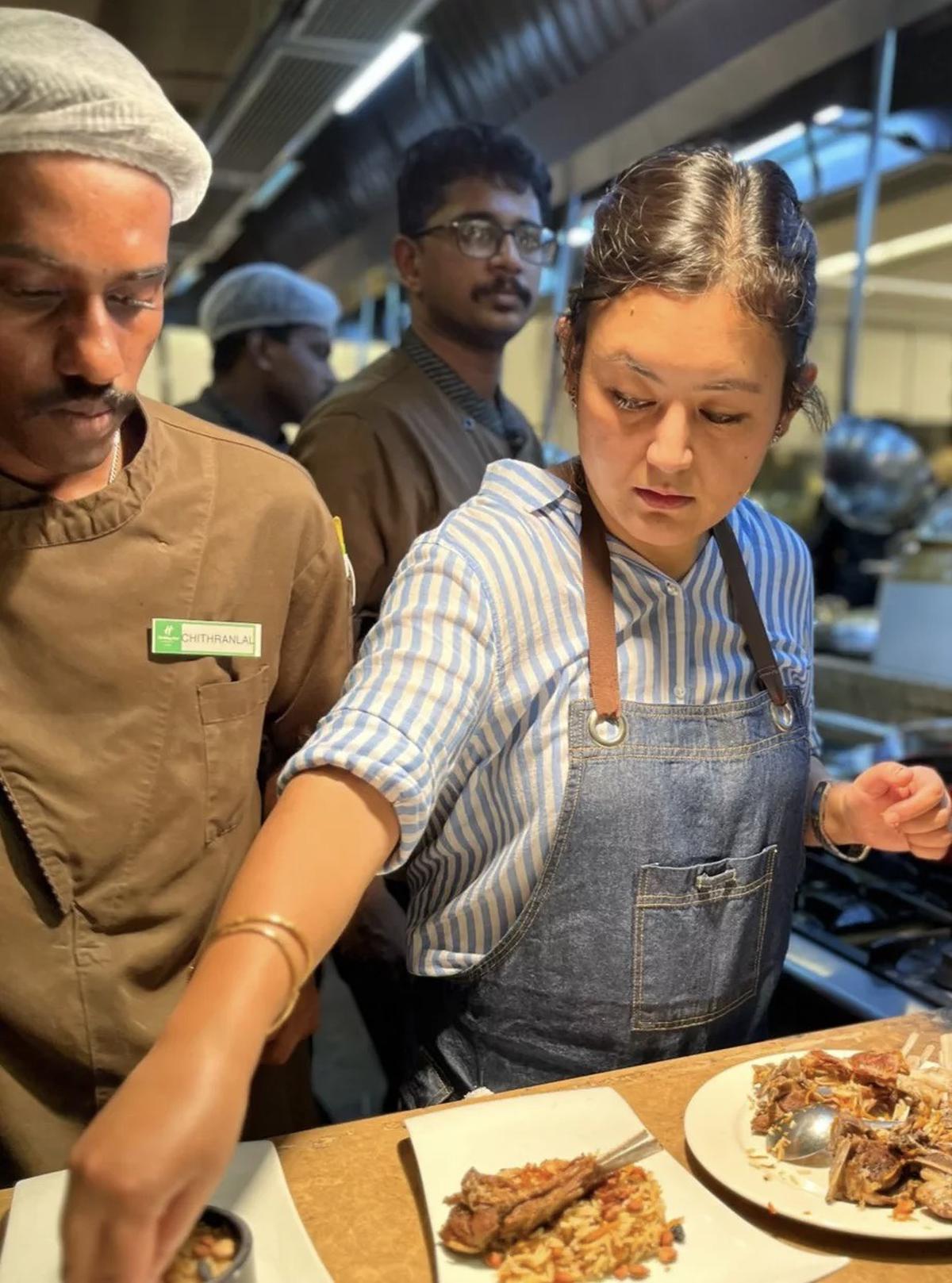
Kunzes Angmo
| Photo Credit:
Special Arrangement
Showcasing these diverse narratives is what prompted Thinles Norboo, 30, to kickstart Ladakh Basket in 2020 — Ladakh’s first e-commerce platform to market the region’s indigenous products of local farmers, artisans, SHGs, etc. With the community-driven social venture founded amid the uncertainties of the pandemic, Thinles says his aim was to empower “local producers and bridge the gap between them and the market by giving them an online and offline platform”. “Some of our bestselling products are organic chamomile tea, water-milled buckwheat, and barley flour, wild Himalayan caraway, and chives, halman apricots without kernel, among others.”
Craft, culture and couture
Pioneers in the fashion world, Jigmat Norbu, and his wife Jigmat Wangmo — the names behind Jigmat Couture — explain how they continue promoting the region’s rich craft heritage through their creations. “When we started, breaking into the polyester-flooded market with a sustainable and slow fashion philosophy was tough. Our focus is cultural fashion that uses Ladakhi yarn and looms,” says the designer whose upcoming collection in April, blends gyaser (a variety of silk-brocade fabric that was traded to Ladakh via China and Benaras) with wool. “We don’t go by mainstream fashion seasons, and launch one collection a year which is themed on Ladakh. This year’s launch champions the gyaser with a range of jackets, throws, kaftans, etc.”
Farm to fashion
Looms of Ladakh, the herder-artisan-led luxury brand, works with 22 decentralised village centres and trains artisans to manufacture sweaters, socks, caps, shawls, among other products with Ladakh pashmina and wool. “The centralised atelier in Leh also manufactures apparel, and the Chushul studio is ready for the expansion of its apparel manufacturing unit,” says Abhilasha Bahuguna, co-founder and director, Looms of Ladakh. She explains that the Looms of Ladakh Women Cooperative is all set to launch a new apparel label Perak, a social in collaboration with Army Wives Welfare Association (AWWA) this month. “The idea behind it is to upskill first-generation semi-skilled artisans into skilled manufacturers cum owners,” she says of the label that will comprise coats, jackets, trousers, dresses, shirts, and home furnishings crafted in khadi cotton, Ladakhi wool, and eri silk.
An ideology that continues to drive younger designers from the region today. Take for instance Lehvallee, a brand founded by sisters Kunzes Angmo and Sonam Ceccarini in 2017 that collaborates with French and European designers. “We founded Lehvallée in response to the rising changes in social and environmental conditions in Ladakh. We create handmade pashmina, home and fashion accessories such as cushions, throws, and rugs crafted from local fibres such as yak khullu, camel fibre, etc. for a niche market,” says Kunzes, 31, who manages the production in Leh, while Sonam takes care of the business development and distribution in France. Currently, the duo retails their products in the domestic market through their store in Leh and exports to France, where the products are sold directly through an online store. Kunzes says their plans for 2023 include building a craft-scale fibre mill in Leh, an integrated solution for yak and wool development in Ladakh, and launching an e-commerce site in India.
Jigmat Norbu, and his wife Jigmat Wangmo
| Photo Credit:
Special Arrangement
One for the arts
Jigmat explains how, alongside the couture wing, they have three ongoing projects: an Artisanal Residency, the Textile Museum set up in 2016, and Art and Artisan which comprises skill development workshops for artisans. “We realised there was no documentation of Ladakh’s art and craft, and we wanted to change this. As a part of the residency, we have students stay and collaborate with us. We also train individuals and self-help groups in weaving, spinning, designing, and product innovation. We also retail their products,” adds Jigmat.
Monisha Ahmed, co-founder, and executive director at Ladakh Arts and Media Organisation (LAMO), who has been visiting the UT for close to four decades, says, “We are an arts organisation that promotes art in all its forms — visual, performance, literature, etc. We look to past practices for context and learning, but we work in contemporary expressions.” For 2023, she says the team is currently working on two projects. “One supported by the Eicher Group Foundation in Nubra on mapping the region’s culture and heritage, and another on the ecologies of water care in the Himalayas.” Also in the works are several art exhibitions planned with artists from the region and outside.
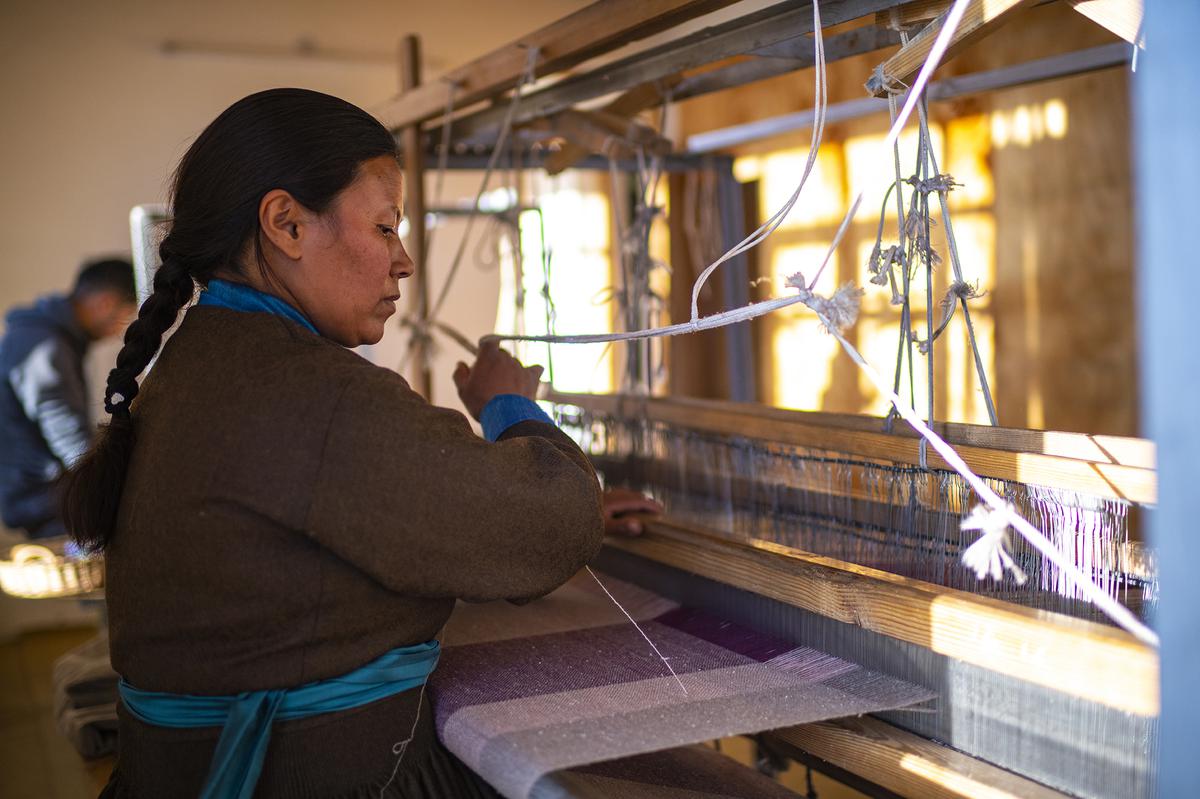
An artisan at Lehvallee
| Photo Credit:
AMAN CHOTANI
So what makes the region an ideal destination for creative pursuits? Shazeb Shaikh, co-founder, KYTA (Karma Yatri Travel and Art) — an experimental residency programme currently based in the Himalayan village of Kalga, and Stok — explains, “Ladakh offers several new stimuli for creativity and artistic exploration.” Having received an overwhelming response from the local artist community for their first edition of the artist residency in 2019, “we responded with a first group exhibition of over 30 local artists in Leh”. On pandemic hiatus since 2020, the group returns this summer with long-term residencies. “We intend to start a new travel and art programme that will create artistic and cultural interventions on the move across Ladakh. We are also hoping to finalise a spot in Ladakh to situate our first local permanent art landmark project,” adds Shazeb.
The tourist maze
The local economy is still hyper-dependent on tourism, adds Hashim Qayoom, co-founder, KYTA. “Opening up adventure tourism like river rafting, skydiving, paragliding, and parasailing are seeing an increasing trend. There are some initiatives that are looking at handicrafts, especially pashmina, through organisations like Looms of Ladakh and Lena.”
Gulzar Hussain, a naturalist from Ladakh Western Himalayas, launched adventure travel company Frozen Himalayas close to a decade ago, and offers outdoor adventure, wildlife safaris, motorcycling tours, heliski, and craft tours in the Western Himalayas. “We also work with the local community heads, artists, and self-help groups to promote homestays, and responsible tourism. Our team comprises locals who enhance the experience of tourists by helping you understand rural communities and folklore,” says Gulzar, who has planned motorcycling, mountaineering, and treks for the summer, and snow leopard tours for the winter this year. However, he is quick to add the impact “mass tourism” is having on the region. “From attracting 30,000-40,000 tourists a year to 6,00,000 annually now, the demand for mass tourism in Ladakh has resulted in the mushrooming of unregulated guest houses, hotels, and traffic jams.”
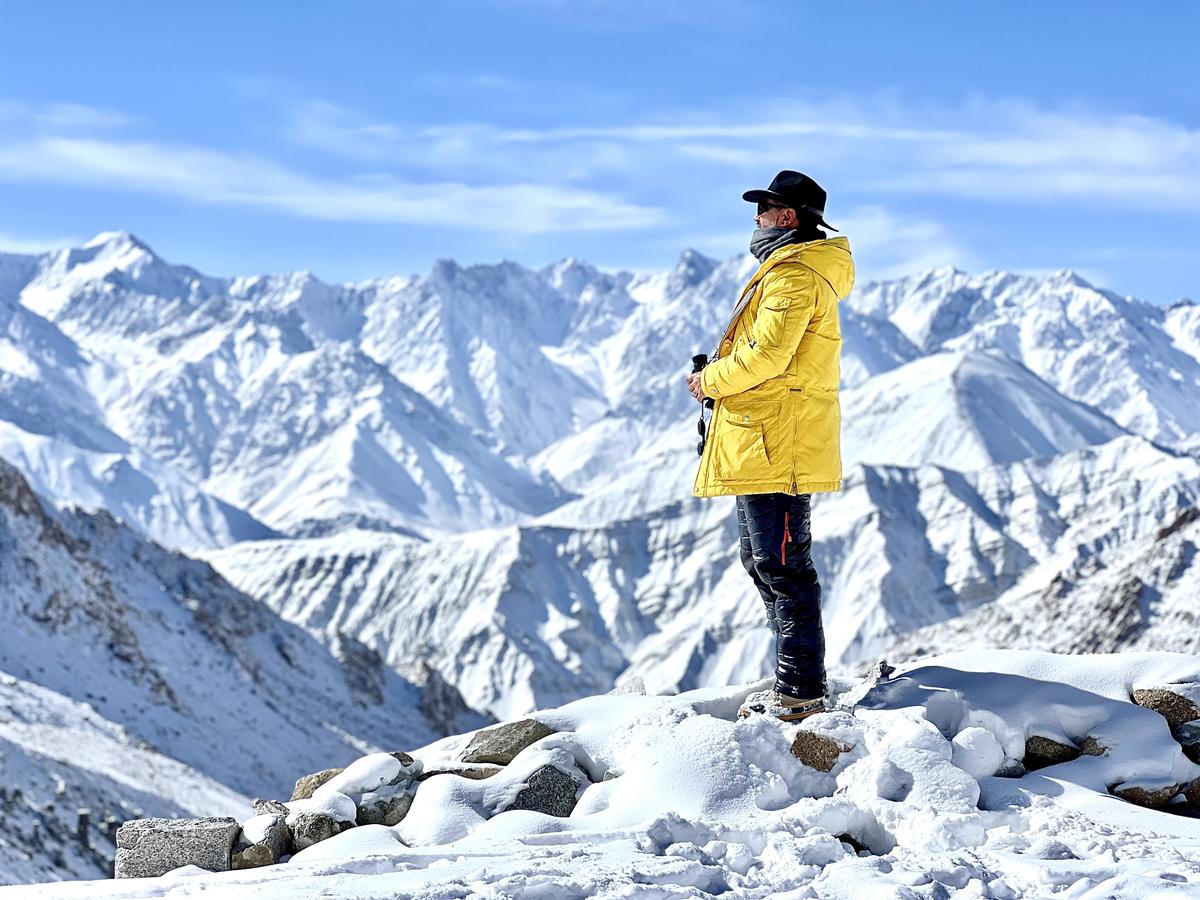
A tourist on a trail by Frozen Himalayas
| Photo Credit:
Special Arrangement
So, if you do happen to visit the region, be mindful of its pristine landscape and rich heritage. Things that its locals are working hard to safeguard with sustainability at the forefront of all industries. “We speak of sustainability in everything today, and for me, the most sustainable solutions were found in traditional practices. Any form of development that completely abandons these practices will never sustain. This journey is an ongoing process and I hope to learn a lot more from Ladakh,” concludes Rigzin.
For all the latest Life Style News Click Here
For the latest news and updates, follow us on Google News.
